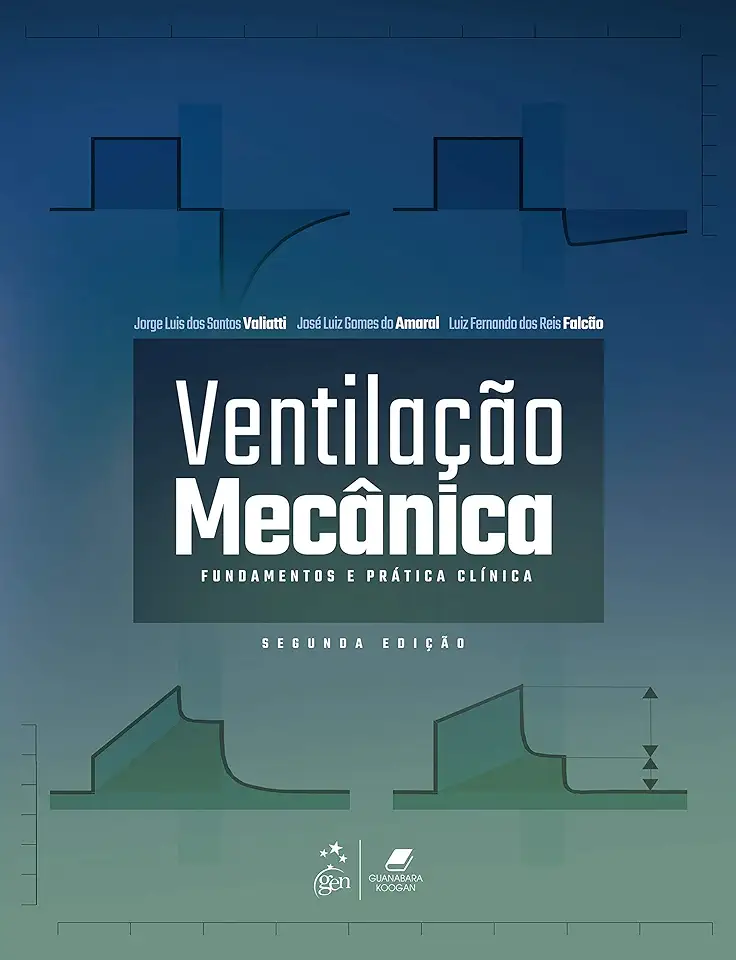
MECHANICAL VENTILATION - VALIATTI, JORGE LUIS DOS SANTOS
MECHANICAL VENTILATION
By Jorge Luis dos Santos Valiatti
A Comprehensive Guide to Principles and Practice
1. Introduction
Mechanical ventilation is a life-saving medical procedure that helps patients breathe when they are unable to do so on their own. It is used in a variety of settings, including hospitals, intensive care units, and emergency rooms.
2. Principles of Mechanical Ventilation
The principles of mechanical ventilation are based on the understanding of how the respiratory system works. The lungs are responsible for taking in oxygen and expelling carbon dioxide. When a person is unable to breathe on their own, a mechanical ventilator can help to support their breathing by providing positive pressure to the lungs.
3. Types of Mechanical Ventilators
There are many different types of mechanical ventilators, each with its own unique features and benefits. The most common type of ventilator is the volume-cycled ventilator, which delivers a set volume of air to the lungs with each breath. Other types of ventilators include pressure-cycled ventilators, time-cycled ventilators, and hybrid ventilators.
4. Indications for Mechanical Ventilation
Mechanical ventilation is indicated for a variety of conditions, including:
- Respiratory failure: This is the most common indication for mechanical ventilation. Respiratory failure occurs when the lungs are unable to adequately exchange oxygen and carbon dioxide.
- Obstructive lung diseases: These diseases, such as asthma and chronic obstructive pulmonary disease (COPD), can make it difficult to breathe. Mechanical ventilation can help to improve airflow and reduce the work of breathing.
- Neuromuscular disorders: These disorders, such as Guillain-Barré syndrome and myasthenia gravis, can affect the muscles that are responsible for breathing. Mechanical ventilation can help to support breathing until the muscles recover.
- Trauma: Mechanical ventilation may be necessary after a traumatic injury, such as a car accident or a fall.
- Surgery: Mechanical ventilation may be used during and after surgery to help patients breathe.
5. Complications of Mechanical Ventilation
Mechanical ventilation can be a life-saving procedure, but it can also be associated with a number of complications, including:
- Ventilator-associated pneumonia (VAP): This is the most common complication of mechanical ventilation. VAP occurs when bacteria enter the lungs through the endotracheal tube.
- Barotrauma: This is a condition that occurs when the pressure in the lungs becomes too high. Barotrauma can damage the lungs and lead to a number of complications, including pneumothorax (collapsed lung) and pulmonary edema (fluid in the lungs).
- Volutrauma: This is a condition that occurs when the volume of air delivered to the lungs is too high. Volutrauma can damage the lungs and lead to a number of complications, including pulmonary edema and atelectasis (collapse of the lungs).
- Oxygen toxicity: This is a condition that occurs when the patient receives too much oxygen. Oxygen toxicity can damage the lungs and lead to a number of complications, including pulmonary fibrosis (scarring of the lungs) and respiratory failure.
6. Weaning from Mechanical Ventilation
Weaning from mechanical ventilation is the process of gradually reducing the amount of support provided by the ventilator until the patient is able to breathe on their own. Weaning is a complex process that requires careful monitoring of the patient's condition.
7. Conclusion
Mechanical ventilation is a life-saving medical procedure that can help patients breathe when they are unable to do so on their own. It is important to understand the principles of mechanical ventilation, the different types of ventilators, the indications for mechanical ventilation, the complications of mechanical ventilation, and the process of weaning from mechanical ventilation.
8. Why You Should Buy This Book
This book is a comprehensive guide to mechanical ventilation. It is written by a leading expert in the field and provides a wealth of information on the principles, practice, and complications of mechanical ventilation. This book is essential reading for anyone who is involved in the care of patients who require mechanical ventilation.